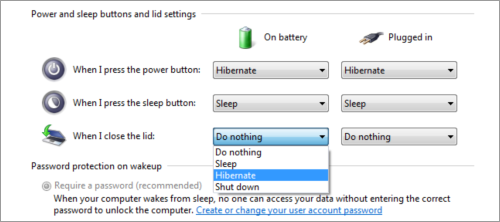Blog posts tagged power
Could you keep your tech going through a blackout?

These won't run your server for long. (Image: mjtmail (tiggy) on Flickr.)
The UK could run out of energy generating capacity in winter 2015, reckons Ofgem, which says as spare generating capacity drops we could see energy prices rise too.
With the average business electricity bill at £2,600, that's not exactly something to look forward to. However, it could be a drop in the ocean compared to the loss in productivity a single blackout could cause.
No power, no business
Losses mount up very quickly when you can't use your computer, speak to customers over the phone or even see to pack orders and send them out. When there's no power, you can't do business.
Traditionally, businesses have planned for power interruptions by plugging their servers into uninterruptible power supplies (UPS). If you suffer a power cut, a UPS will continue supplying power. Chances are you won't be able to work, but you will be able to shut your server down properly, protecting it from damage and hugely reducing the risk of data loss.
If you have a server on your premises, you really should use a UPS. It's that simple. They start from around £100, but you'll need to spend a bit more to get a decent model like the APC Smart-UPS.
There are lots of UPS models available from companies like PC World Business, eBuyer and Servers Direct.
Introducing the BlackCurrent
But if you want to actually carry on working, you need significantly more juice than a typical UPS will supply. Step forward industrial battery specialist UK Powertech, which has launched a 'compact energy storage device' for smaller businesses and homes.
Called the BlackCurrent, it charges off the mains when the supply is good, then supplies electricity back to your equipment when required. You should be able to continue running computers, servers and critical gear for an hour or two.
The BlackCurrent does come at a price. It starts at £850, and you'll certainly have to spend more if you want to keep your computers and servers going for long.
Is it worth it? That really depends on your company's approach to risk, and how much damage a power outage could cause your business. But if predictions of power cut doom and gloom are in any way accurate, maybe it's worth considering.
Friday Donut tip: change what happens when you shut your laptop lid
Every Friday afternoon we bring you a great business IT tip. From nuggets that make repetitive tasks easier to simple ways to banish business tech annoyances, we’re here to help.
If there’s something you’d like our help with, send an email to info@itdonut.co.uk or just leave a comment on this post. We’ll try and cover it in a future IT Donut tip.
Shut your laptop lid
If you shut your laptop lid right now, what happens? Depending on whether your laptop’s plugged into the mains or an external monitor, it may go to sleep, shut down, hibernate or do nothing at all.
But did you know you can set exactly what happens when you shut your laptop lid? If you’re using Windows Vista or Windows 7, it’s easy.
Options to shut your laptop lid
The settings for what happens when you shut your laptop lid can be found in your computer’s power options. To reach them:
- Click the Start button
- Type power options in to the Start search box
- Press the Enter key on your keyboard
- In the Power Options box that appears, click Choose what closing the lid does
The settings in the box that appears let you choose how your laptop should behave when you shut the lid.

Use the drop-down menus to choose what should happen. You can set different behaviours depending on whether your laptop is plugged into the mains or running on battery power.
- Sleep: this will send your computer into sleep mode. It keeps data in the memory but will turn the screen and components like the hard drive off. Sleep mode is like pausing a movie – you can be up and running again in a couple of seconds, with all your programs just as you left them.
Choose if: you want to save power but be up and running again quickest. - Hibernate: this powers down your laptop, saving more power than sleep. Your laptop will save the status of your programs to the disk, so when you wake it up everything’s there just as you left it. The downside is it takes longer to resume from hibernation than from sleep.
Choose if: you want to conserve maximum power when not using your laptop. - Shut down: this shuts down your laptop completely. It’s just like choosing the Shut down option from the start menu – so your laptop will close all programs and power down completely. You’ll have to go through the full start-up procedure to use the computer again.
Choose if: to be honest, there are few good reasons to choose the shut down option. - Do nothing: this one’s pretty self-explanatory. Shut your laptop lid and it’ll have absolutely no effect at all on what your laptop’s doing.
Choose if: you use your laptop closed while plugged into an external monitor.
Once you’ve chosen the settings you want, just click the Save changes button. That’s it – next time you shut your laptop lid, it’ll do what you told it to.
What are your laptop’s battery settings? Do you have any good battery-saving strategies? Leave a comment to let us know.



